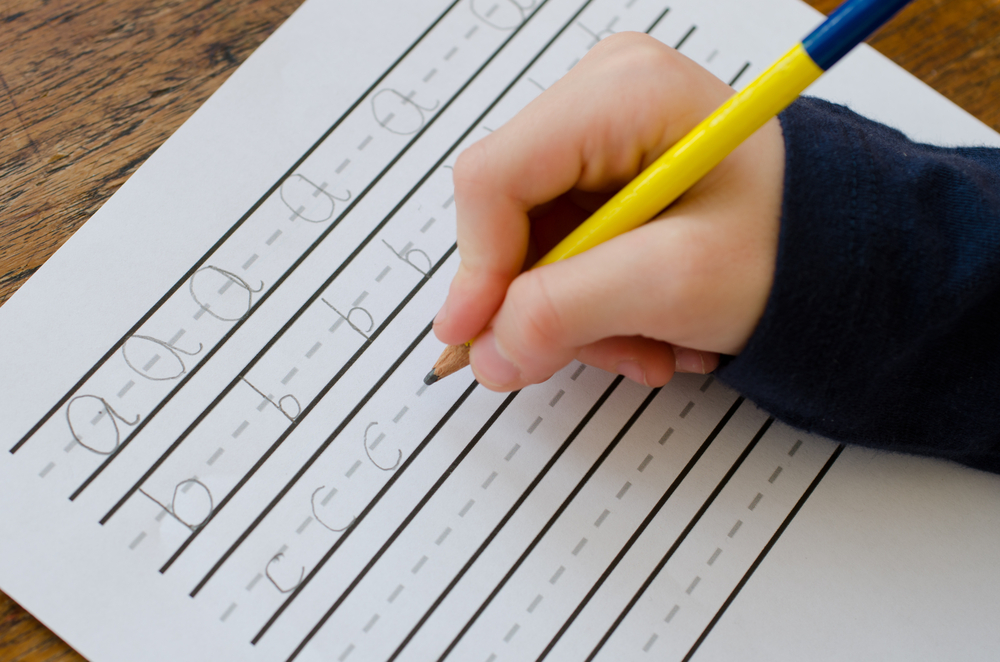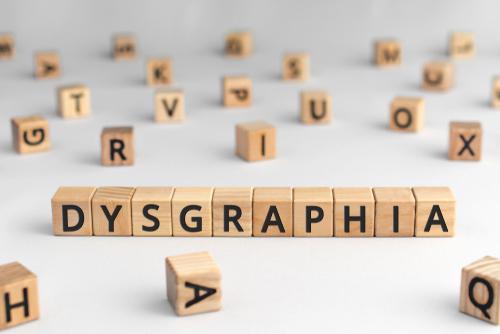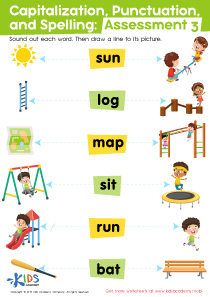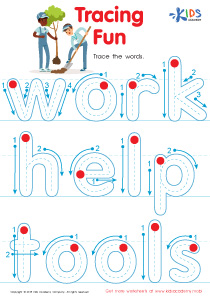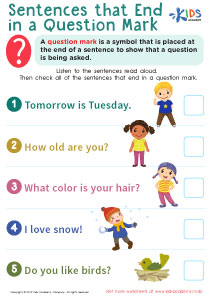Cursive handwriting practice Cursive Writing Worksheets for Ages 4-9
4 filtered results
-
From - To
Enhance your child’s penmanship with our “Cursive Handwriting Practice” worksheets for ages 4-9. These expertly designed printables help youngsters master the art of cursive writing, fostering fine motor skills, literacy, and confidence. Each worksheet offers guided practice for every letter of the alphabet, as well as common words and sentences, making learning both fun and effective. Our resources aim to develop a fluid writing style through engaging exercises that cater to young learners at various skill levels. Explore our cursive writing worksheets today for a comprehensive and enjoyable handwriting improvement journey.
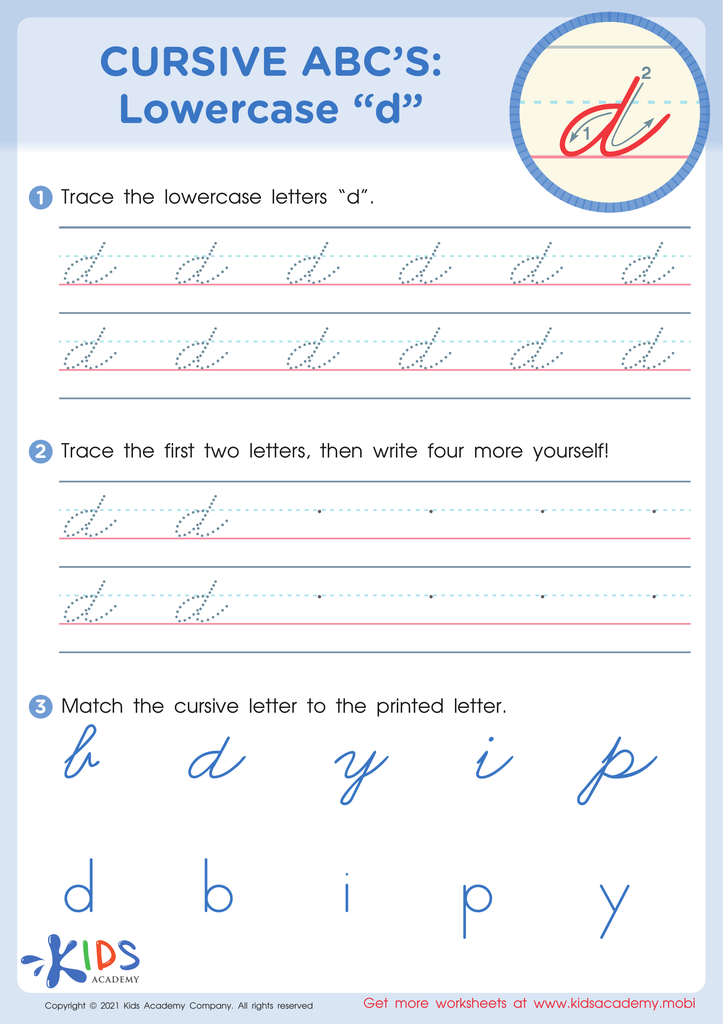

Cursive ABCs: Lowercase d
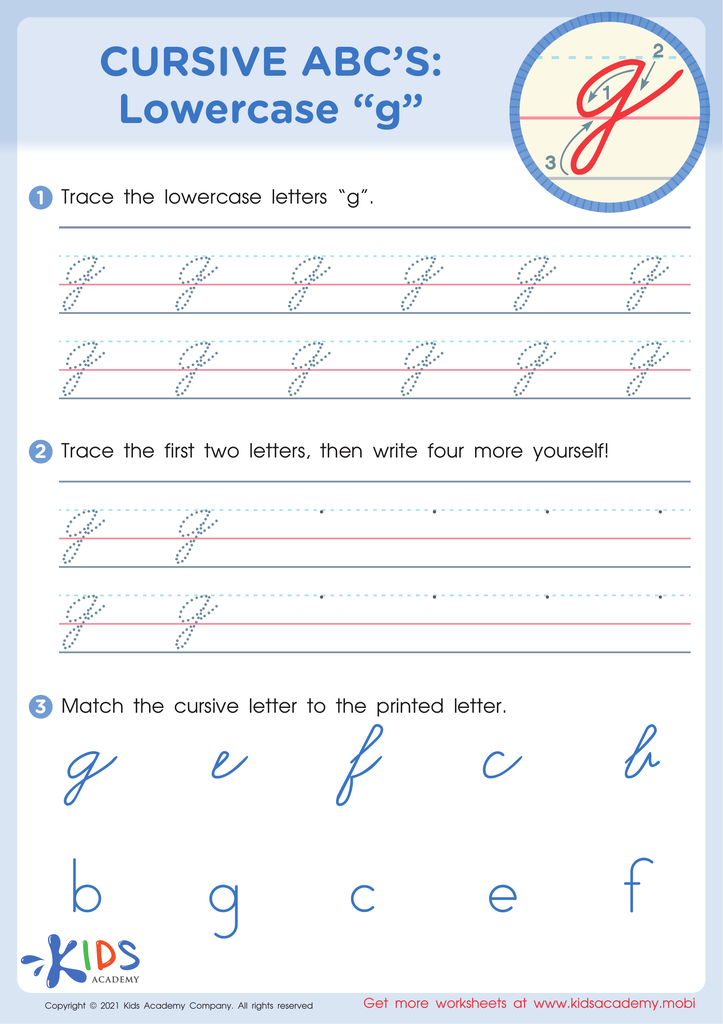

Cursive ABCs: Lowercase g


Cursive ABCs: Lowercase b
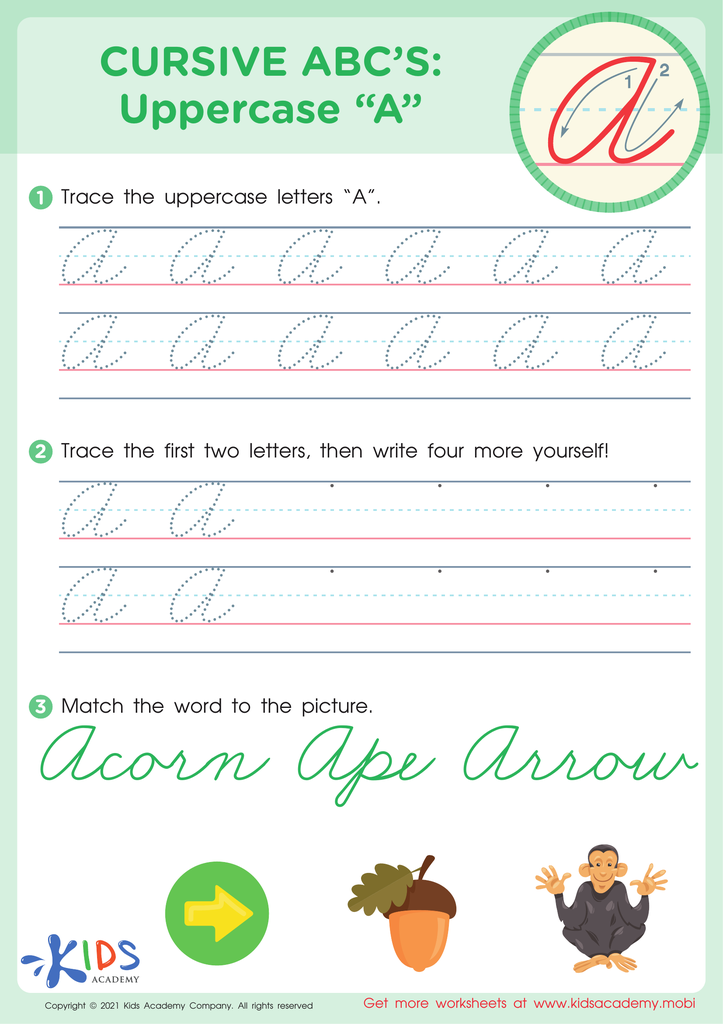

Cursive ABCs: Uppercase A
Cursive handwriting practice is valuable for children ages 4-9 due to its significant cognitive, motor, and academic benefits. First, learning cursive writing enhances fine motor skills as children must coordinate hand movements to create the fluid strokes of cursive letters. This boosts dexterity and hand-eye coordination, crucial for various everyday activities and other academic tasks.
Cursive writing also reinforces learning and memory. The unique, integrated motions required to form each cursive letter compound cognitive engagement, helping children memorize the alphabet and recognize word patterns more effectively. This cognitive activity stimulates brain development pertaining to reading and comprehension.
Furthermore, cursive handwriting can improve literacy and writing fluency. The uninterrupted flow of cursive writing encourages continuous thinking and thus can enhance vocabulary application and idea sequencing in young children’s narratives and essays.
Emotionally, handwriting beautifully in cursive instills pride and boosts confidence. Schools and homes that emphasize this practice communicate that precision and care in their work are valuable, fostering a mindset of diligence.
Lastly, even in the digital age, the ability to read and write in cursive remains relevant. Many historical documents are written in cursive; thus, teaching children this style of handwriting preserves important cultural and historical literacy. For these reasons, parents and teachers should invest in cursive handwriting practice.







